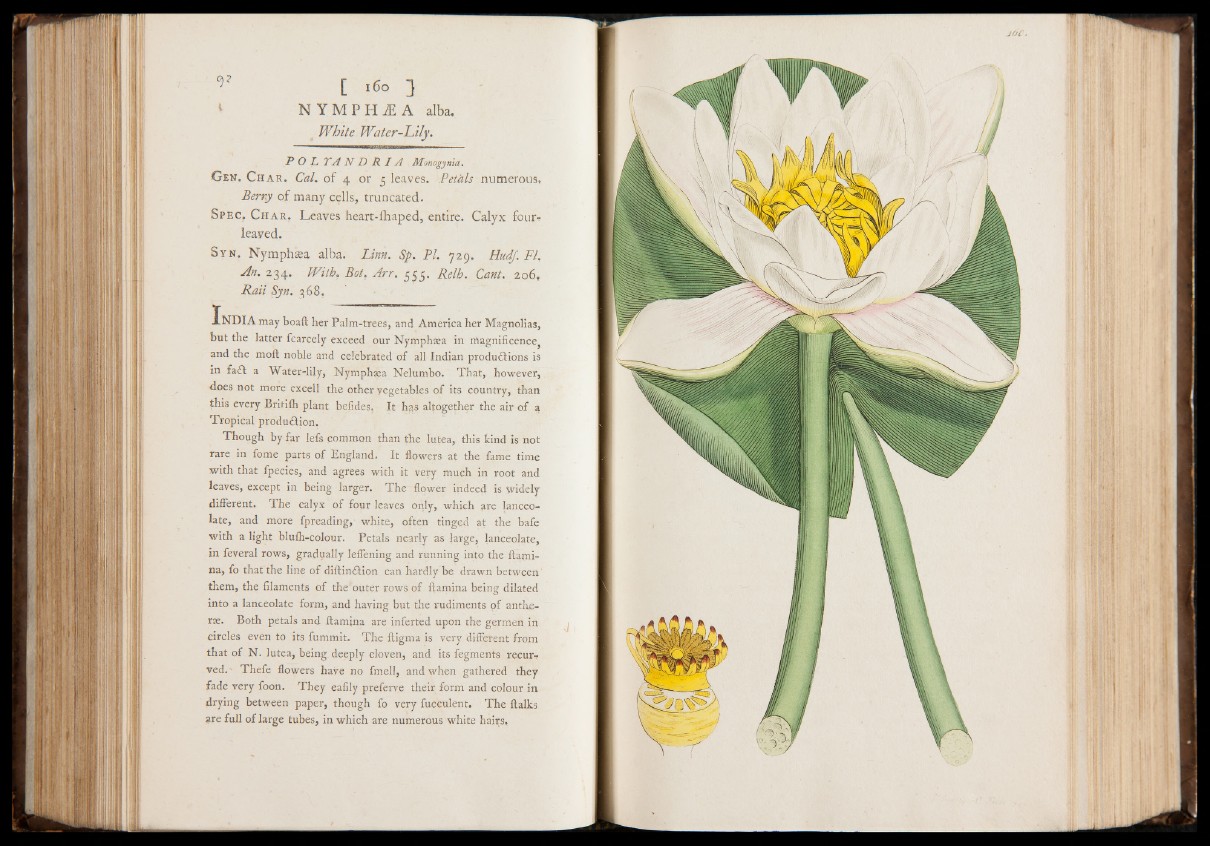
1 N Y M P H O A alba,
White Water-Lily.
P O L T A N D R I A Monogynia.
Gen. Char. Cal. of 4 or 5 leaves. Petals numerous,
Berry of many cells, truncated.
Spec. Char. Leaves heart-fhaped, entire. Calyx four-?
leayed.
S yn. Nymphasa alba. Linn. Sp. PI. 729. Hud/. FI,
An. 234. With, Bot, Arr. 555. Relh. Cant. 206,
Raii Syn. 368,
Xn DIA may boaft her Palm-trees, and America her Magnolias,
but the latter fcarcely exceed our Nymphaea in magnificence)
and the moll noble and celebrated of all Indian productions is
in fact a Water-lily, Nymphaea Nelumbo. That, however,
does not more excell the other vegetables of its country, than
diis every Brifilh plant befides, It has altogether the air of a
Tropical production.
Though by far lefs common than the lutea, this kind is not
rare in fome parts of England. It flowers at the fame time
with that fpecies, and agrees with it very much in root and
leaves, except in being larger. The flower indeed is widely
different. The calyx of four leaves only, which are lanceolate,
and more fpreading, white, often tinged at the bafe
with a light blulh-colour. Petals nearly as large, lanceolate,
in feveral rows, gradually leffening and running into the ftami-
na, fo that the line of diftinClion can hardly be drawn between
them, the filaments of the outer rows of ftamina being dilated
into a lanceolate form, and having but the rudiments of anthe-
rse. Both petals and ftamina are inferted upon the germen in
circles even to its fummit. The ftigma is very different from
that of N. lutea, being deeply cloven, and its fegments recur-*
ved. - Thefe flowers have no fmell, and when gathered they
fade very foon. They eafily preferve their form and colour in
drying between paper, though fo very fucculent. The ftalks
are full of large tubes, in which are numerous white hairs.